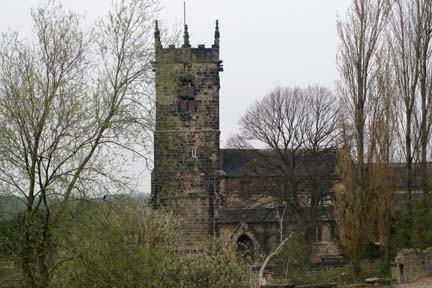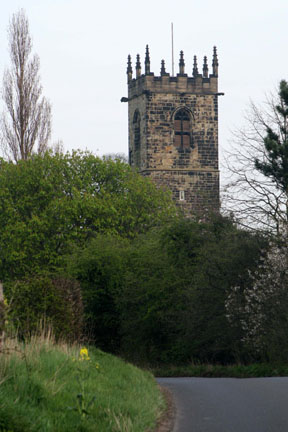Part 2
During the 11th
century, it was a common and well-known and established practise that
churches and parishes belonged to the local lord or seigneur
as he was the person who sanctioned
its building on his land. He also controlled the appointment of the priest
and any endowments to the church but did not necessary pass on the tithes
and/or endowments to his priest thus these gifts went to a layman and not
to the church. This system was not founded by legislation and was aimed at
maintaining a balance between the government of the bishops and the
dominium of the seigneur - a sort of ‘you scratch my back and I ill
scratch yours’ - quid pro quo.
In the late 11th century or very early 12th century
a new Bishop of Rome was selected whose aim was to re-establish the
authority of the bishop in place of the seigneur in all parishes and in
1123 the lateral council decreed “that the priests are to be instituted in
parish churches by bishops” thus setting the priests office on a proper
spiritual basis whereby the relationship between the priest the seigneur,
the bishop and people became immediately recognisable as a holy one. As a
result of this reform a large number of the laity began to give their
churches to religious bodies that were not included in the new reform and
so enjoyed the same privileges as the seigneurs. Those who endowed the
monasteries with churches and lands were perhaps motivated by piety and
also financial gain.

What have the last two paragraphs got to do with St Peter’s? You may ask:
Simply this: About the same time that a new bishop of Rome was being
elected a former Hermitage at Nostell was granted Priory status to monks
of the Augustinian Order who carried out much parochial work. Alric
meanwhile had died and was succeeded by his son Swein as the owner of
Felkirche and its lands. Prompted by the actions of other seigneurs, Swein
granted Felkirche together with lands, tithes and other appurtenances to
the Priory and convent of St Oswald, Nostell about 1121 AD. This gift of
the church and land can be confirmed by an entry in the Chartularies of
Nostell by Swein’s son, which was made in 1153/54 following his father’s
death. I reproduce it here. “Notification by Adam son of Swein to William
archbishop of York and the chapter of St Peter that he has confirmed the
alms which his father, Swein son of Alric, made to the regular cannons of
Nostell by the hands of archbishop Thurston, namely the church of Hoderode
with a carucate of land and all pertaining to the church, half
the church of Mekesburg with all pertaining to it, similarly, the church
of Addewic, Winterset with 2 carucates of land and everything pertaining
to the Vill in wood and plain and 8 bovates of land in Crofton. Adam has
granted 3 bovates of land in Brampton for the soul of Matilda, his wife.
The Alms of his father, mother and himself should be held free from all
secular service in order that their souls shall, by the mercy of God, be
free from all the power of the Devil and from all the pains and torments
of Gehenna”.
Carucate =
approx 120 acres
Borate = 1/8 of
a carucate approx 15 acres
Gehenna =
Derived from Hebrew, a place of torture and human sacrifice to Baal and
Moloch.
Note the
reference to Hoderode, now Hodroyd, which was a small Anglo Saxon
settlement close by probably founded some two or three hundred years
earlier by one named Hoda.
So here we have an example of what became known at the time
of Martin Luther as an indulgence – a payment or an expensive gift to the
church in order that the donors ancestors and descendants etc would be
prayed for regularly so that their souls would be received in heaven and
not despatched to the power of the devil. This self-same charter was still
being confirmed by the heirs and descendants of Swein and Adam well into
the 13th century, and as the church was now the responsibility
of Nostell Priory the canons had the legal right to its upkeep and the
appointment of a rector. With this in mind we arrive at the point in the
late 13th century where the enlarging of the church first began
but not forgetting that repairs must have been
carried out in the previous 150 years.